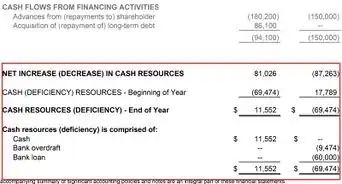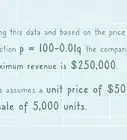This article was co-authored by Darron Kendrick, CPA, MA. Darron Kendrick is an Adjunct Professor of Accounting and Law at the University of North Georgia. He received his Masters degree in tax law from the Thomas Jefferson School of Law in 2012, and his CPA from the Alabama State Board of Public Accountancy in 1984.
wikiHow marks an article as reader-approved once it receives enough positive feedback. In this case, 81% of readers who voted found the article helpful, earning it our reader-approved status.
This article has been viewed 879,363 times.
Working capital is the measure of cash and liquid assets available to fund a company's day-to-day operations. Having this information can help you manage your business and make good investment decisions. By calculating working capital, you can determine if, and for how long, a business will be able to meet its current obligations. A company with little or no working capital is probably not one with a bright future. Calculating working capital is also useful for assessing whether a business is making efficient use of its resources.[1] The formula to calculate working capital is:
Working capital = current assets - current liabilities[2]
Steps
Sample Calculator
Doing the Basic Calculations
-
1Calculate current assets. Current assets are assets that a company will convert to cash within one year.[3] These assets include cash and other short-term accounts. For example, accounts receivable, prepaid expenses and inventory would all be current assets.
- You can usually find this information on a company's balance sheet, which should include a subtotal of current assets.
- If the balance sheet does not include a subtotal of current assets, read through the balance sheet line by line. Add up all accounts which meet the definition of a current asset to come up with a subtotal. For example, you would include the figures listed for "accounts receivable," "inventory," and "cash and equivalents."
-
2Calculate current liabilities. Current liabilities are those that are due within one year. They include accounts payable, accrued liabilities and short-term notes payable.[4]
- The balance sheet should include a subtotal of current liabilities. If it does not, use the balance sheet information to find this total by adding up the listed liabilities. For example, this would include "payables and provisions," "taxation payable," and "short term loans."
Advertisement -
3Calculate working capital. This calculation is just basic subtraction. Subtract the current liability total from the current asset total.
- For example, imagine a company had current assets of $50,000 and current liabilities of $24,000. This company would have working capital of $26,000. The company would be able to pay all its current liabilities out of current assets and would also have cash left over to serve other purposes. The company could use the cash for financing operations or long-term debt payment. It could also distribute the money to shareholders.
- If current liabilities are greater than current assets, the result is a working capital deficit.[5] A deficit could signal that the company is at risk of becoming insolvent (meaning unable to pay their debts when they become due). There are many reasons why a company may become insolvent. Such a company may need other sources of long-term financing. This may signal the company is in trouble, and may not be a good investment.
- For example, consider a company with current assets of $100,000 and current liabilities of $120,000. This means they will only be able to pay $100,000 of that debt, and will still owe $20,000 (their working capital deficit). In other words, the company will be unable to meet its current obligations and must sell $20,000 worth of long-term assets or find other sources of financing.
- If the company is in danger of being insolvent, they may opt to restructure the debt so that they can continue operating while paying off their debt.
Understanding and Managing Working Capital
-
1Calculate the current ratio. For further insight, many analysts use an indicator of financial strength called the "current ratio." The current ratio calculation uses the same numbers from the first two steps of Part 1, but provides a ratio instead of a dollar figure.
- A ratio is a way of comparing two values, relative to one another.[6] Calculating a ratio is usually a matter of simple division.
- To calculate the current ratio, divide current assets by current liabilities. Current ratio = current assets ÷ current liabilities.[7]
- Using the example from Part 1, the company's current ratio is 50,000 ÷ 24,000 = 2.08. This means that the company's current assets are 2.08 times greater than the company's current liabilities.
-
2Understand what the ratio means. The current ratio is a way of evaluating a company's ability to meet its current financial obligations. Put simply, it indicates how capable a company is of paying its bills.[8] It is often better to use the current ratio when comparing different companies or industries.
- The ideal current ratio is around 2.0. A falling ratio, or a ratio below 2.0 could mean a greater risk of insolvency. On the other hand, a ratio in excess of 2.0 might mean that management is too conservative and reluctant to take advantage of the the company's opportunities.[9]
- Using the example above, a current assets ratio of 2.08 is probably healthy. You could interpret this to mean that current assets could fund current liabilities for a little over two years. This is assuming, of course, that liabilities stay at the current level.
- The acceptable current ratio will differ between industries. Some industries are capital intensive and may need to borrow to finance operations. Manufacturing companies, for example, are likely to have high current ratios.
-
3Manage your working capital. Business managers must track all parts of working capital to maintain the right level. This includes inventory, accounts receivable and accounts payable. Managers must assess the profitability and risks that come with too little or too much working capital.[10]
- For example, a company with too little working capital risks not being able to pay its current liabilities. Holding too much working capital though can also be a problem. A company with lots of working capital may be able to invest in long-term productivity improvements. For example, surplus working capital could be invested in new production facilities or retail stores. These types of investments can increase future revenues.
- If the working capital ratio is too high or low, consider the tips below for some ideas on how to improve the ratio.
Expert Q&A
Did you know you can get expert answers for this article?
Unlock expert answers by supporting wikiHow
-
QuestionAre lease-holder improvements considered a liability?
 Michael R. LewisMichael R. Lewis is a retired corporate executive, entrepreneur, and investment advisor in Texas. He has over 40 years of experience in business and finance, including as a Vice President for Blue Cross Blue Shield of Texas. He has a BBA in Industrial Management from the University of Texas at Austin.
Michael R. LewisMichael R. Lewis is a retired corporate executive, entrepreneur, and investment advisor in Texas. He has over 40 years of experience in business and finance, including as a Vice President for Blue Cross Blue Shield of Texas. He has a BBA in Industrial Management from the University of Texas at Austin.
Business Advisor
-
QuestionIf we have 427,000 current assets and 136,000 current liabilities, what is the amount of working capital we would need to remain in the business?
 Darron Kendrick, CPA, MADarron Kendrick is an Adjunct Professor of Accounting and Law at the University of North Georgia. He received his Masters degree in tax law from the Thomas Jefferson School of Law in 2012, and his CPA from the Alabama State Board of Public Accountancy in 1984.
Darron Kendrick, CPA, MADarron Kendrick is an Adjunct Professor of Accounting and Law at the University of North Georgia. He received his Masters degree in tax law from the Thomas Jefferson School of Law in 2012, and his CPA from the Alabama State Board of Public Accountancy in 1984.
Financial Advisor The current ratio indicated by these numbers is 3.14, which would generally indicate a healthy position at the point in time that this measurement was made. How much would it take to stay in business is specific to your company, but maintaining a ratio of 2 to 1 or better is usually a good indicator of a healthy state of affairs.
The current ratio indicated by these numbers is 3.14, which would generally indicate a healthy position at the point in time that this measurement was made. How much would it take to stay in business is specific to your company, but maintaining a ratio of 2 to 1 or better is usually a good indicator of a healthy state of affairs. -
QuestionWhat is a comfortable working capital ratio for the purchase of a company?
 Michael R. LewisMichael R. Lewis is a retired corporate executive, entrepreneur, and investment advisor in Texas. He has over 40 years of experience in business and finance, including as a Vice President for Blue Cross Blue Shield of Texas. He has a BBA in Industrial Management from the University of Texas at Austin.
Michael R. LewisMichael R. Lewis is a retired corporate executive, entrepreneur, and investment advisor in Texas. He has over 40 years of experience in business and finance, including as a Vice President for Blue Cross Blue Shield of Texas. He has a BBA in Industrial Management from the University of Texas at Austin.
Business Advisor While the exact ratio of current assets to current liabilities varies by industry and company, it more often reflects the risk profile of the owners. Most analysts expect working capital (the difference between current assets and current liabilities) to be a minimum of 25%-30% of current liabilities (a ratio of 1.25-1.3) for financial stability.
While the exact ratio of current assets to current liabilities varies by industry and company, it more often reflects the risk profile of the owners. Most analysts expect working capital (the difference between current assets and current liabilities) to be a minimum of 25%-30% of current liabilities (a ratio of 1.25-1.3) for financial stability.
References
- ↑ http://www.investopedia.com/terms/w/workingcapital.asp
- ↑ http://www.investopedia.com/terms/w/workingcapital.asp
- ↑ http://www.svtuition.org/2009/03/working-capital-and-its-importance.html
- ↑ http://www.svtuition.org/2009/03/working-capital-and-its-importance.html
- ↑ http://www.workingcapital.org/
- ↑ http://www.mathsisfun.com/definitions/ratio.html
- ↑ http://www.investopedia.com/terms/w/workingcapital.asp
- ↑ http://www.investopedia.com/terms/w/workingcapital.asp
- ↑ http://www.investopedia.com/terms/w/workingcapital.asp
About This Article
To calculate working capital of a company, first determine the current assets and liabilities of the company, which you can usually find on the balance sheet. Subtract the current liability total from the current asset total to get the working capital. Keep reading for tips from our accounting reviewer on how to use your working capital to benefit your business!
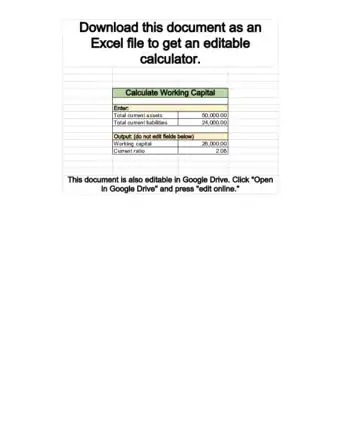
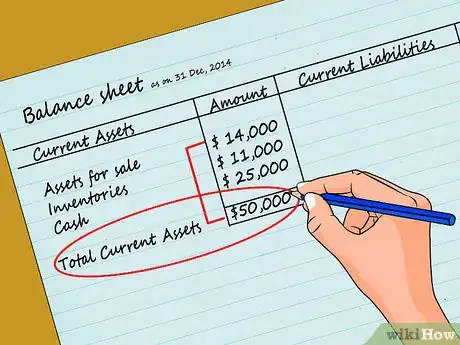
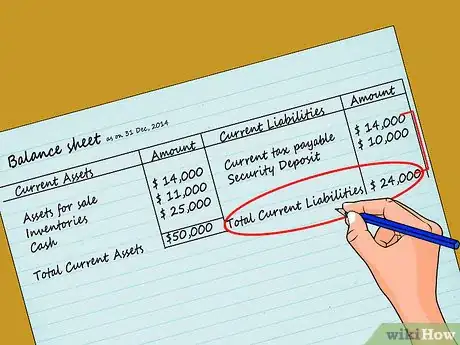
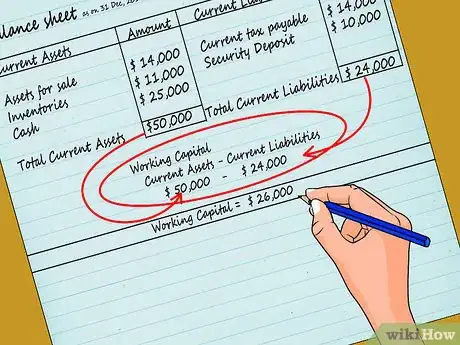
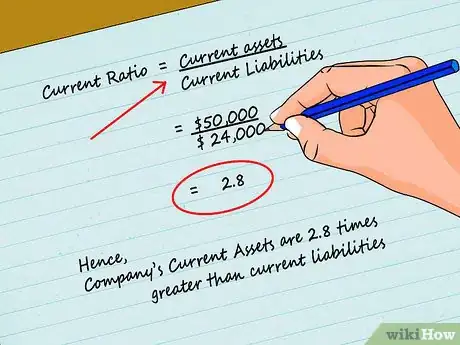
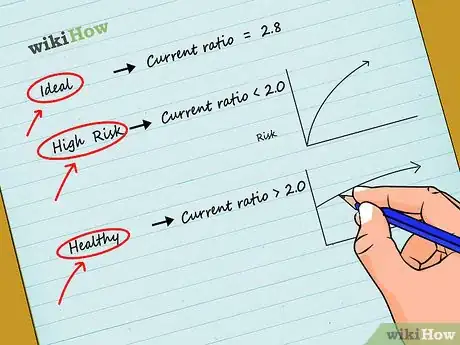
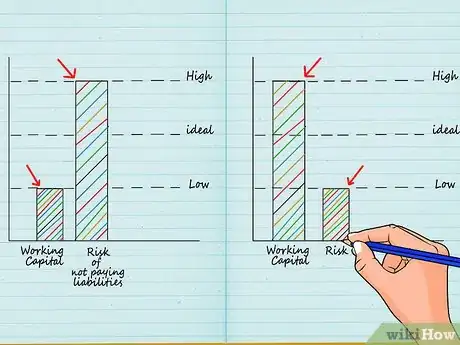
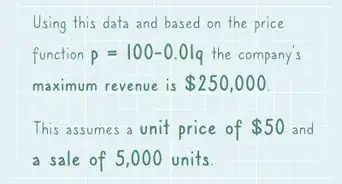

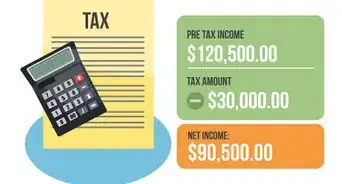



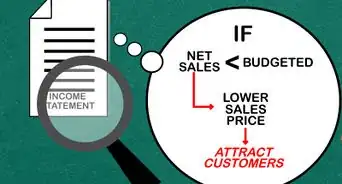
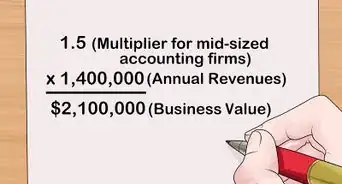

-Step-04.webp)


